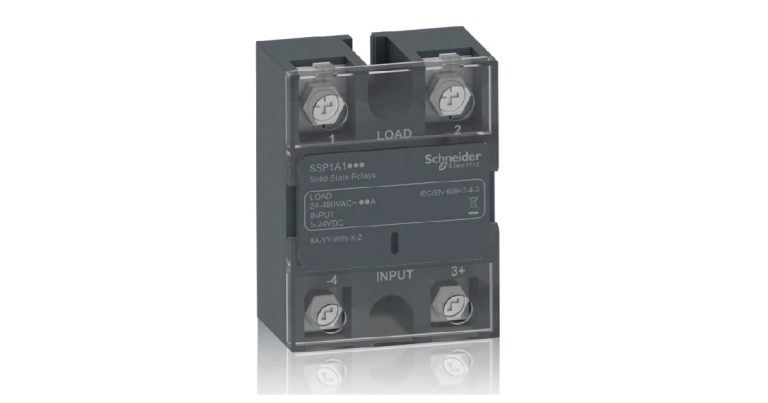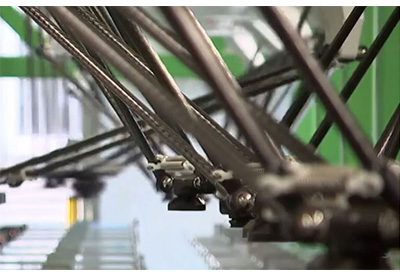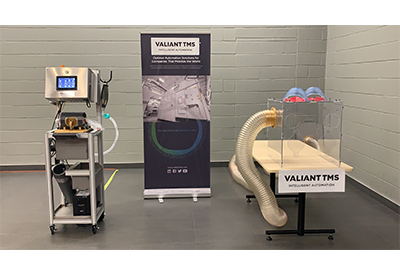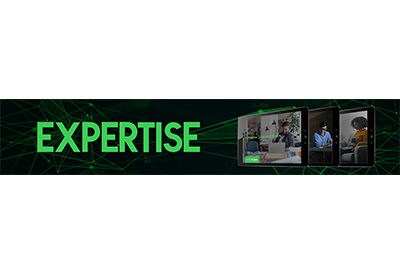Accommodating a Distributed Workforce for the Long-Term

November 11, 2020
By Sarah Pickard
PB&SI sat down with David O’Reilly, Vice President and General Manager Secure Power Division, Schneider Electric Canada, and James See, Regional Account Leader for Central Canada, Secure Power, to discuss accommodating a distributed workforce for the long term. David has been with Schneider for 3.5 years and prior to that has had a diverse career with a variety of roles in TELCO, software, and consulting. James is the Regional Account Manager Leader for Central Canada and he has been with the Secure Power Division at Schneider Electric for 5 years.
How has your team approached the development of UPS technology that meets growing demand for reliable and resilient host servers?
David: “Whether you’re talking about larger 3 phase, centralized UPSs or smaller, single-phase UPSs, they have both long been used to ensure IT equipment remains operational when the power goes out or fluctuates outside of acceptable levels. Over the years, however, Schneider Electric has worked hard to make these mission-critical devices more reliable, smaller, longer lasting, and easier to monitor and maintain.
“For the last several years the market has been experiencing the growth of edge computing; ie, more and more compute resources being placed at the edge of the network closer to users. Organizations’ IT assets increasing have become distributed between centralized cloud data centers, smaller regional enterprise or colocation data centers, and very small (1-2 racks perhaps) local edge deployments. I think the COVID-19 pandemic has re-enforced this wide distribution of IT as companies move away from large centralized corporate HQ real estate models to a highly distributed workforce with smaller regional offices. 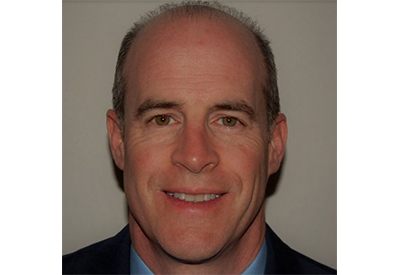
“Monitoring, managing, and servicing IT equipment and its supporting infrastructure (e.g. UPSs) becomes a bigger challenge whenever everything is highly distributed. Particularly with smaller edge installations, there may not be trained staff on site and there might be a large number of geographically dispersed sites. And so, we’ve been focused on making our UPSs longer lasting and easier to manage. For example, many of our models today use lithium-ion batteries which offer double or more the lifespan compared to valve-regulated, lead-acid batteries while also being much smaller and lighter.
“Another example is our EcoStruxure Ready APC Smart-UPS. It is the first cloud-enabled UPS designed for distributed IT. Its built-in management card connects the UPS to the cloud enabling management and service personnel to easily monitor the UPS status from a secure web portal from any browser or mobile device. Through this management interface, you can receive automatic notifications, firmware updates, device maintenance and warranty protection.
“Schneider Electric has put a lot of focus on developing remote monitoring apps and services through its EcoStruxure IT platform. With EcoStruxure IT Expert, for example, management teams can more easily monitor and manage all their UPSs across all their sites from one dashboard using their smartphone. As well, EcoStruxure IT Asset Advisor enables Schneider Electric UPS experts or your trusted managed service provider to monitor and dispatch field service reps as needed for you. This can greatly simplify management and reduce your service costs.”
In Canada, are you seeing the same sort of increased demand as other countries?
David: “Canada’s demand for host servers and virtualized environments has grown significantly in the past few years as many workplaces and services, public and private, undergo digital transformations. As the move to cloud and hybrid hosting continues over the next few years, with many businesses transitioning to digital, online environments, we are projecting increased growth.”
How are host servers affected by fluctuations and surges that are not controlled by UPS?
James: “Voltage transients and fluctuations, commonly referred to as “surges”, “spikes”, “brownouts” and “over-voltages”, can stress or damage server power supplies, motherboards, and network interface cards. Our white paper, “The Seven Types of Power Problems” goes into this in much more detail. These transients can come in through the AC power line or through the network data lines. They can be externally or internally-generated within the building. Most UPS units, however, provide some degree of surge protection, noise filtering and voltage regulation, in addition to its battery backup function. Proper building wiring grounding combined with the use of Transient Voltage Surge Suppressors (TVSS) installed at the service entrance of the building is always recommended to ensure good protection against the more severe impulse power transients (e.g., nearby lightning strikes).” 
How does one address UPS needs for their host servers? What is the assessment process?
James: “Understanding the management and service needs for each UPS installation is another key part of the assessment process. UPS monitoring apps and services should be a critical component of the overall UPS solution. Questions to ask include:
- How business critical are the servers connected to the UPS? Are you willing to operate in a “run to fail” mode or do you want proactive warning of changing UPS status and environmental conditions at the site?
- Is there a generator present to ensure continuous operation during a sustained outage or does the UPS need the ability to initiate a graceful shutdown of connected servers, physical and virtual? This is done through our PowerChute Network Shutdown software app.
- Is the site manned by staff who are tasked with monitoring the UPS? If not, then remote management capabilities are required
- Do you have staffing and bandwidth to monitor the entire fleet of UPSs or do you need a managed service provider or the UPS vendor to manage the fleet remotely for you?
- Do you have field service staff to handle battery or UPS replacements as needed or do you need the vendor to manage that for you?
Consideration of all of these questions can ensure that the UPS solution best fits ALL of your needs.”
What is involved in implementing a UPS system for a host server?
James: “When planning the installation of a UPS for a host server, similar to the previous question (5), there are several factors to consider before installation can begin. First and foremost, the space needs to be understood, the modular system allows for flexibility, but the available space will impact how the system can be installed. In the same vein, we need to understand if the server will be tower or rack mounted, and if we’ll need to account for separate mounting kits – again this can change our options, perhaps requiring a separate UPS per-rack or a larger installation supporting several towers.
From here, the input and output voltage requirements, available amperage outlet, and required battery run time can be looked at to ensure a UPS with the correct load, size, and function can be integrated to support the server system adequately. Assuming the UPS is being monitored, the UPS’s network management card should be connected to the network and configured. The monitoring app whether that be a web portal or an app on your phone should be used to make sure the UPS is discovered and is reporting status information. If the PowerChute Network Shutdown software is being used to provide graceful shutdown of connected servers, install the app on the server and ensure communication has been established. Go through all of the settings to make sure they are configured according to your requirements.”
How has remote monitoring of power and system reliability changed how servers and server banks are used and where they are located?
James: “The ability today to easily monitor servers and infrastructure equipment from afar has certainly made it much more feasible to place critical IT equipment in remote, unmanned locations. Its simply not practical or cost effective to staff every IT installation. Organizations might have dozens, hundreds or even thousands of edge sites. The ability to connect to these systems using your smart phone from anywhere, anytime to immediately understand device status, to troubleshoot, perform firmware updates, initiate reboots and so on has made it possible to put mission-critical IT at the edge of the network in a cost-effective way. And when you combine remote monitoring with an automated field service dispatch service, putting your IT in remote, unmanned places becomes even more cost-effective. Imagine having the vendor detect a failing UPS battery and replacing it for you before you even know there was a problem! This is possible now with Schneider Electric’s UPS Monitoring and Dispatch service.”
What is the primary benefit of remote monitoring?
David: “The primary benefit of remote monitoring is giving managers instant visibility to the health and status of their mission-critical infrastructure devices from anywhere, anytime regardless of how many devices they have or how distributed geographically they are. Particularly during this year’s unprecedented business climate with so many IT managers being physically far from the equipment they manage, remote monitoring has become a critical, must-have feature of UPSs today.”
In your opinion, what is the biggest benefit of the Schneider’s UPS and remote monitoring? And are there any new or coming advancements in this area?
David: “The biggest benefit of Schneider Electric’s UPS and remote monitoring solutions, in my opinion, is how easy and cost effective we’ve made managing and maintaining a fleet of UPSs across distributed IT sites. This starts with offering a broad line of reliable, field-proven UPS solutions. We offer different solutions each optimized for either home/home office, business networks, access provider networks or data centers. Our remote management apps and services made possible by our EcoStruxure IT platform make monitoring from any mobile device easy and provides the ability to have Schneider Electric’s experts – and/or your trusted managed service provider – monitor and proactively respond to issues for you. This frees up time for IT managers to focus more on delivering business value vs. time spent managing physical infrastructure.
“As for coming advancements, the EcoStruxure IT platform provides a data lake, a secure repository of massive amounts of anonymized device data. “Big data” analytics and machine learning algorithms can be developed and trained on this data to yield insights and make predictions that improve reliability, improve efficiency, and/or reduce operating expenses. We’re going to make management much more predictive and automated in the future, thanks to the framework established by the EcoStruxure IT platform.”

